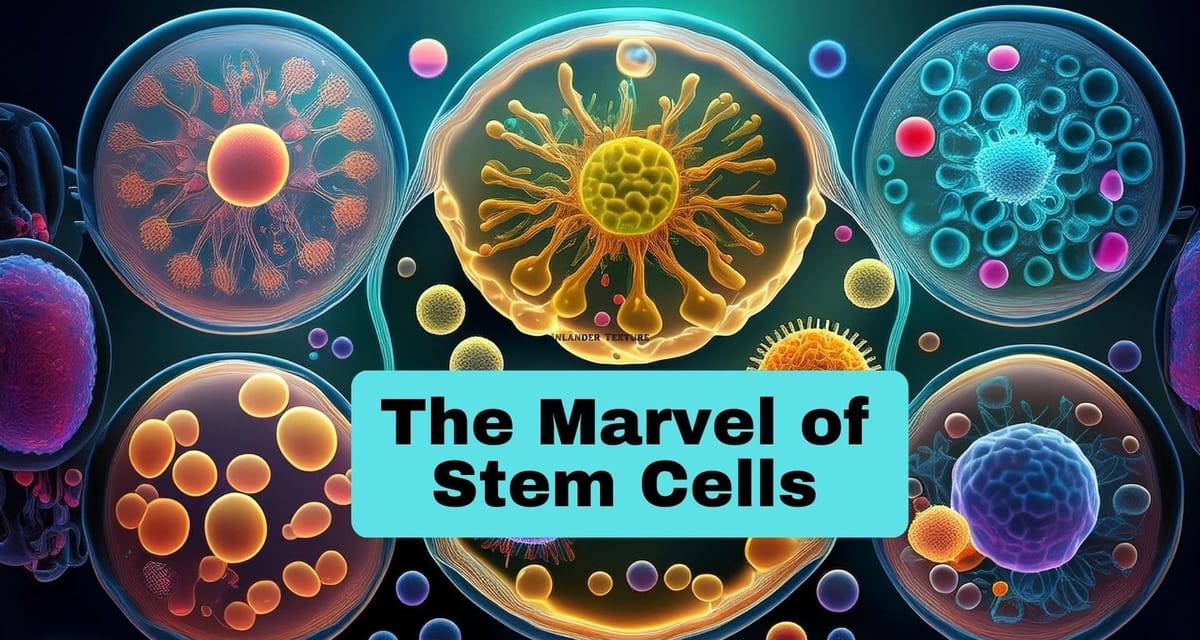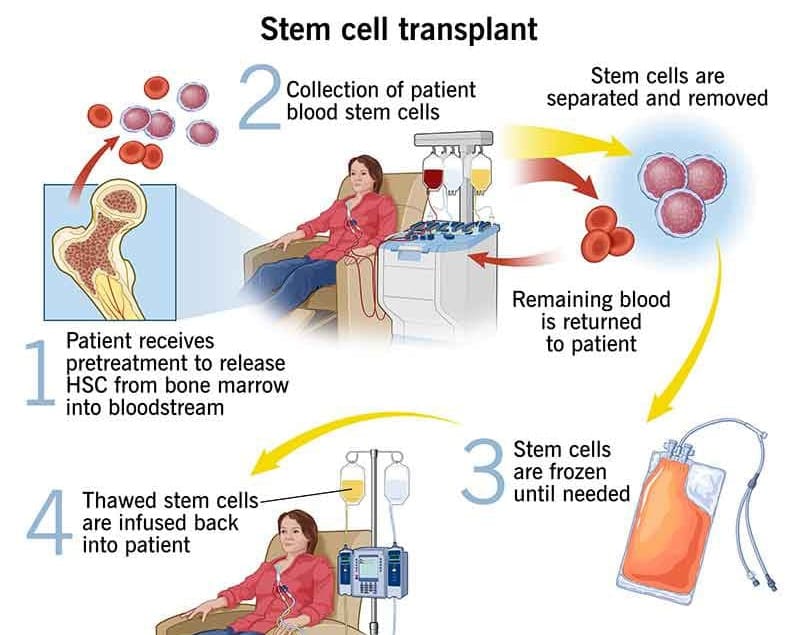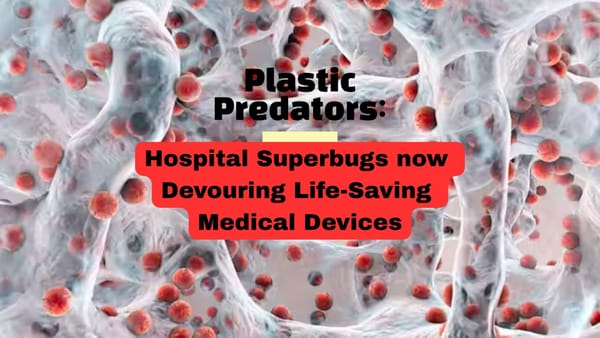The Marvel of Stem Cells: Secrets of Regeneration
Stem cells are like blank slates, yet to develop into a specific cell, and that given the right signals can transform into any cell the body needs.

I've seen my fair share of medical breakthroughs, but few have captured my imagination like stem cells. These tiny powerhouses of potential are revolutionizing medicine as we know it. Today, I want to share with you the amazing world of stem cells, and explore their incredible abilities and the promise they hold for the future of healthcare.
What Are Stem Cells and Where Do They Come From?Stem cells are the body's raw materials. They are cells from which all other cells with specialized functions are created. What makes them so special is:
They can divide and renew themselves for long periods.
They can develop into other types of cells with specific functions.
There are three main types of stem cells:
- Embryonic stem cells: these come from 3 - 5-day-old embryos. At this stage, an embryo is called a blastocyst and has about 150 cells. These are pluripotent (ploo-RIP-uh-tunt) stem cells, meaning they can divide into more stem cells, or become any type of cell in the body. This allows embryonic stem cells to be used to regenerate or repair diseased tissue and organs.
- Adult stem cells: these stem cells are found in small numbers in most adult tissues, such as bone marrow or fat. Compared with embryonic stem cells, adult stem cells have a more limited ability to give rise to various body cells
- Induced Pluripotent Stem Cells (iPSCs): These are adult cells, altered to have properties of embryonic stem cells. Scientists have transformed regular adult cells into stem cells using genetic reprogramming. By altering the genes in the adult cells, researchers can make these cells act similarly to embryonic stem cells.
This new technique may allow the use of reprogrammed cells instead of embryonic stem cells and prevent immune system rejection of the new stem cells. However, scientists have yet to discover whether these altered adult cells will cause adverse effects in humans.
Perinatal stem cells: Researchers have discovered stem cells in amniotic fluid as well as umbilical cord blood. These stem cells can change into specialized cells. Amniotic fluid fills the sac that surrounds and protects a developing fetus in the uterus. Researchers have identified stem cells in samples of amniotic fluid drawn from pregnant women for testing or treatment — a procedure called amniocentesis
The Science Behind Stem Cells
I'm no biologist, but I find the science behind stem cells fascinating. At their core, stem cells are like blank slates. They're undifferentiated, meaning they haven't yet developed into a specific cell type. But given the right signals, they can transform into any cell the body needs.
This process, called differentiation, is how a single fertilized egg can develop into a complex organism with trillions of cells. It is also how our bodies repair and replace damaged tissues.
Here's a simplified breakdown of how it works:
- Stem cells receive chemical signals from their environment.
- These signals activate specific genes within the stem cell.
- The activated genes trigger the cell to produce proteins associated with a particular cell type.
- Over time, the stem cell transforms into a specialized cell type.
It's like watching a blank canvas slowly transform into a masterpiece. Pretty cool, right?

Applications of Stem Cell Therapy
Now, let's get to the exciting part - how we use stem cells in medicine today. Stem cell therapy is already making waves in treating a variety of conditions. Here are a few examples:
- Leukemia: Stem cell transplants have been used to treat blood cancers for decades
- Spinal cord injuries: Researchers are exploring how stem cells could help repair damaged spinal tissue
- Heart disease: Stem cells are being studied as a way to regenerate heart muscle after a heart attack
- Parkinson's disease: Scientists are investigating whether stem cells could replace the brain cells lost in Parkinson's
- More patients who may benefit from stem cell therapies now include those with type 1 diabetes; Hodgkin disease; non-Hodgkin lymphoma; some solid tumor cancers; aplastic anemia; immunodeficiencies; amyotrophic lateral sclerosis; osteoarthritis and others
Success Story
One success story that always sticks with me is that of Timothy Ray Brown, remembered as the "Berlin Patient." He was the first person to be cured of HIV using a stem cell transplant. While his case was unique and the treatment isn't widely applicable, it shows the incredible potential of stem cell therapy.
The Future of Stem Cell Research
The future of stem cell research is looking extremely bright. Scientists are working on some truly mind-blowing applications:
- 3D-printed organs: Imagine printing a new kidney or liver using stem cells from the actual patient.
- Personalized medicine: Treatments tailored to an individual's genetic makeup using stem cells.
- Reversing ageing: Some researchers believe stem cells could hold the key to slowing or reversing the ageing process.
One area I'm particularly excited about is the potential for stem cells to treat neurological disorders. The brain has always been a tough nut to crack concerning regenerative medicine. However, recent advances in stem cell research are offering new hope for conditions like Alzheimer's and multiple sclerosis.
Ethical Considerations
I'd be remiss if I didn't address the elephant in the room - the ethical debates surrounding stem cell research. It's a thorny issue, with valid concerns on all sides.
The main controversy centres around embryonic stem cells, derived from human embryos. This raises questions about the moral status of embryos and when human life begins.
Here's a quick breakdown of some key perspectives:
| Stakeholder | Typical Stance |
|---|---|
| Scientists | Generally support stem cell research, citing its potential to save lives and reduce suffering |
| Religious Groups | Often oppose embryonic stem cell research on moral grounds |
| Ethicists | Varied opinions, often seeking a balance between scientific progress and ethical concerns |
| Patients | Many support stem cell research, hoping for new treatments for currently incurable conditions |
I lean towards supporting continued research, and also believe we must proceed with caution and respect the differing viewpoints.
Why is there controversy about using embryonic stem cells?
Embryonic stem cells are taken from early-stage embryos — a group of cells that forms when eggs are fertilized with sperm at an in vitro fertilization clinic and then donated with informed consent from donors. Several questions have been raised about the ethics of embryonic stem cell research.
The good news is that advances in iPSC technology are helping to sidestep some of these ethical concerns. By using adult reprogrammed cells to act like embryonic stem cells, we can potentially reap the benefits of stem cell research without the baggage, offering hope for a long and healthy future.





